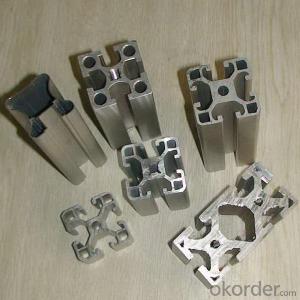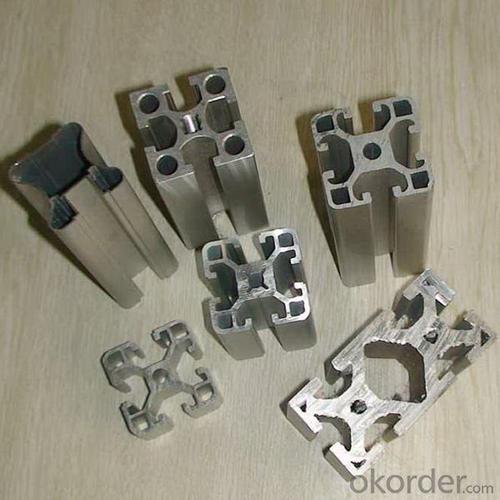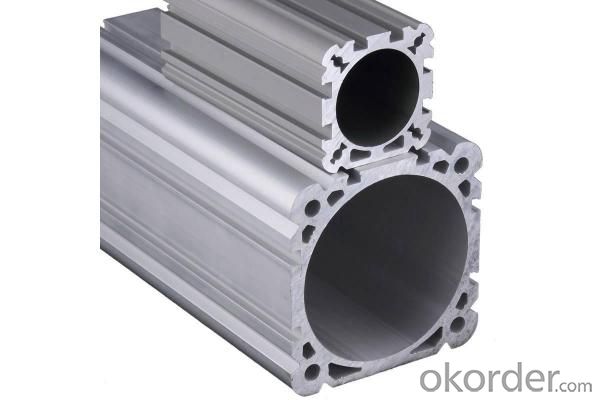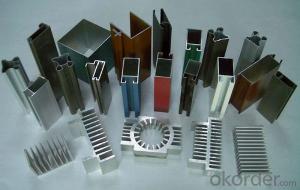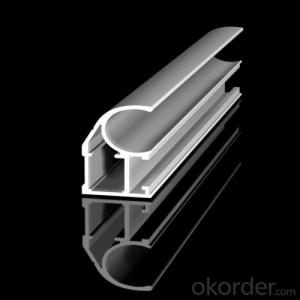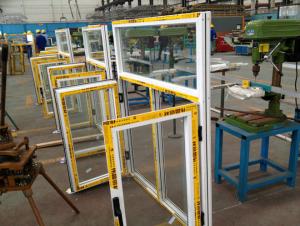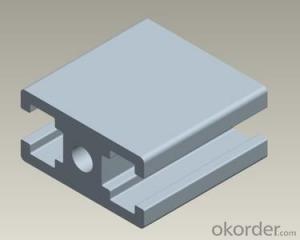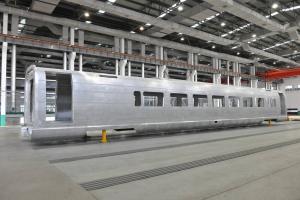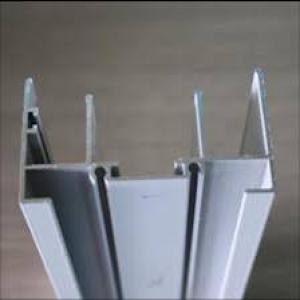Standard Extruded Aluminum Profiles for Office Screen Office Partition
- Loading Port:
- Shanghai
- Payment Terms:
- TT OR LC
- Min Order Qty:
- 5 m.t.
- Supply Capability:
- 1000 m.t./month
OKorder Service Pledge
OKorder Financial Service
You Might Also Like
Specification
1. Specification of Aluminum Profiles for Office Screen Office Partition
Alloy | State | Tensile Strength δbMpa | Non-proportional Stretching Stress(δp0.2Mpa) | Stretching rate (δ%) | Pattern Thickness (mm) | HV | HW |
No Less Than | |||||||
6061 | T4/T6 | 180/265 | 110/245 | 16/8 | - | - | - |
6063 | T5/T6 | 160/205 | 110/180 | 8/8 | 0.8/- | 58/- | 8/- |
6063A | T5/T6 | 200,190/230,220 | 160,150/190,180 | 5,5/5,4 | 0.8,0.8/-,- | 65,65/-,- | 10,10/-,- |
2. Application of Aluminum Profiles for Office Screen Office Partition
wall cladding, ceilings, bathrooms, kitchens and balconies, shutters, doors,windows…
3. Feature of Aluminum Profiles for Office Screen Office Partition
Surface Quality :
Be free from Oil Stain, Dent, Inclusion, Scratches, Stain, Oxide Decoration, Breaks, Corrosion, Roll Marks, Dirt Streaks and other defect which will interfere with use,
Mochenical Property:
Chemical Composite and Mechanical Property
4. Certificate:
SGS and ROHS(if client request, paid by client), MTC(plant provided), Certificate of Origin(FORM A, FORM E, CO), Bureau Veritas and SGS (if client request, paid by client), CIQS certificate
5. Image of Aluminum Profiles for Office Screen Office Partition
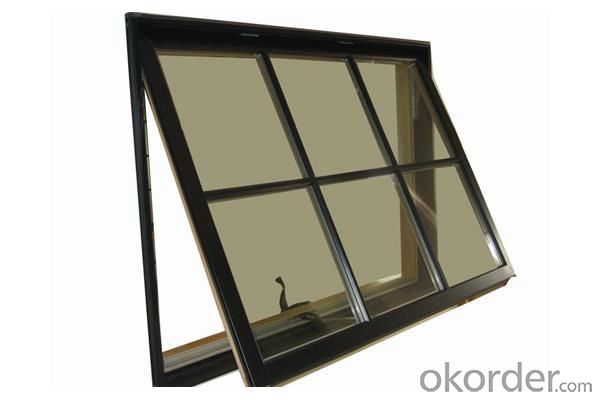
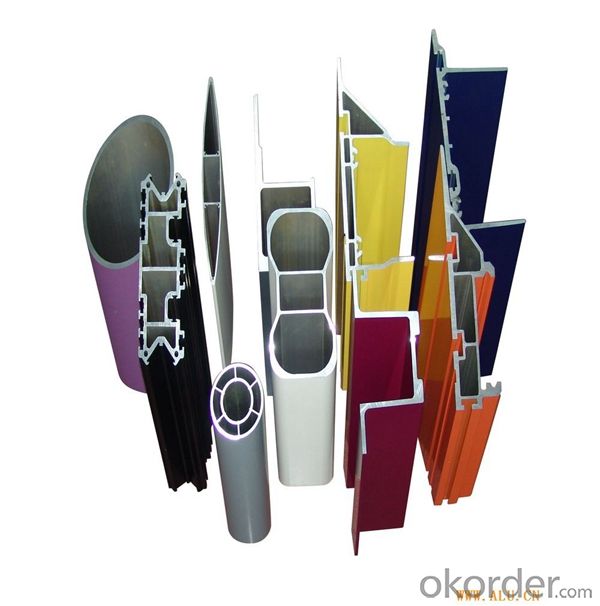
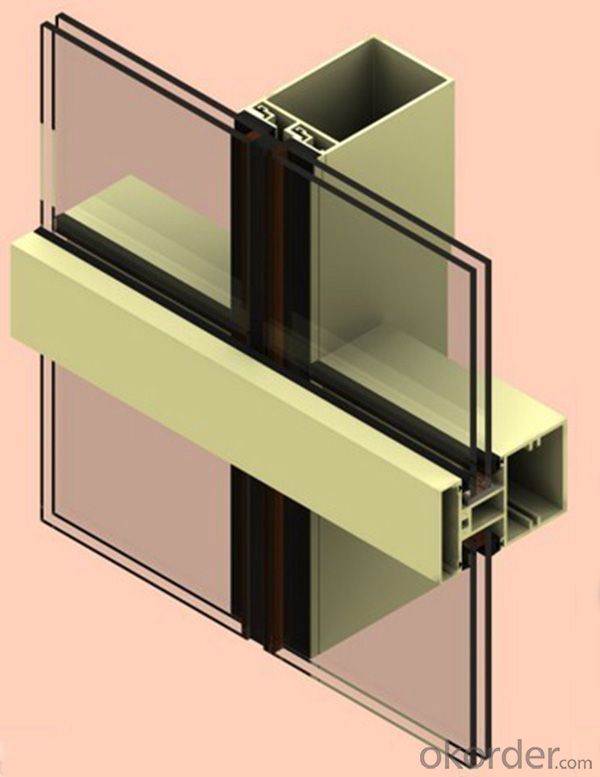
6. Package and shipping of Aluminum Profiles for Office Screen Office Partition
First, plastic cloth with drying agent inside; Second, Pearl Wool; Third, wooden cases with dry agent, fumigation wooden pallets, aluminum surface could cover blue PVC film
7. FAQ
Question 1: What is your MOQ?
We accept one ton per type for an order. But the detail we could negotiate.
Question 2: What is your normal terms of payment?
We always trade with you by T/T. But we also accept the L/C as you require.
Question 3: How many kinds of the surface treatment we can choose?
You could choose different color of powder coated. Anodized of black. matte silver, nature, champagne, bronze color. Mill finished. Wooden finished and printed.etc.
Question 4: Can you supply OEM services?
We offer OEM services for 17 years.
Question 5: How many days for opening the mould?
Normally about 10 days.According to the difficulty of your drawing.
Question 6: Can i choose the package what i want?
Yes, of course. We offer various kinds of package.e.g.PE foam. Shrink film. Wrapping paper.
But we would give you professional suggestion of package.
- Q: Are aluminum profiles suitable for use in medical device manufacturing?
- Yes, aluminum profiles are suitable for use in medical device manufacturing. Aluminum is a lightweight and durable material that offers excellent mechanical properties, corrosion resistance, and versatility. It can be easily machined and formed into various shapes, making it ideal for creating custom components for medical devices. Additionally, aluminum profiles can be anodized or coated to further enhance their surface properties, ensuring compatibility with medical environments.
- Q: This question asks for an overview of the typical materials used in the production of aluminum profiles.
- <p>Aluminum profiles are commonly made from various aluminum alloys, each with specific properties suited for different applications. The most common materials include 6063 aluminum alloy, known for its good mechanical properties and corrosion resistance, making it ideal for construction and industrial applications. 6061 aluminum alloy is also widely used due to its high strength-to-weight ratio and is often found in aerospace and automotive industries. Other alloys such as 6082 and 7075 are used for their superior strength and are common in heavy-duty applications. Each alloy is chosen based on the required strength, weight, and resistance to environmental factors for the intended use of the aluminum profile.</p>
- Q: This question asks if aluminum profiles can be utilized in the construction of exterior walls and roofs.
- <p>Yes, aluminum profiles are commonly used in exterior walls and roofs due to their durability, corrosion resistance, and low maintenance requirements. They offer a lightweight alternative to traditional materials and can be designed to withstand various weather conditions. Aluminum profiles are also recyclable, contributing to their sustainability. They are often used in modern architecture for both aesthetic and functional purposes, such as in curtain walls, window frames, and roofing systems.</p>
- Q: Can aluminum profiles be used in structural applications?
- Yes, aluminum profiles can be used in structural applications. Aluminum is a lightweight and versatile material that offers excellent strength-to-weight ratio and corrosion resistance. It can be easily formed, welded, and machined, making it suitable for various structural projects such as building frames, bridges, and industrial structures.
- Q: This question asks for a comparison between aluminum profiles and other materials used in constructing frames, focusing on their characteristics and performance.
- <p>Aluminum profiles are favored for building frames due to their high strength-to-weight ratio, making them lightweight yet durable. They offer excellent corrosion resistance, which is superior to materials like steel, which can rust. Aluminum profiles are also easy to machine and form, allowing for complex designs. Compared to wood, they are more resistant to weathering and pests. However, they may not have the same aesthetic appeal as wood or the thermal insulation properties of some plastics. Overall, aluminum profiles are a strong choice for structural integrity and longevity in frame construction.</p>
- Q: This question asks about the various types of protective coatings applied to aluminum profiles to enhance their durability and resistance to environmental factors.
- <p>Aluminum profiles are coated with different materials to protect them from corrosion and enhance their appearance. Some common coatings include: anodizing, which creates a hard, corrosion-resistant oxide layer on the surface; powder coating, a durable and versatile method that provides a wide range of colors and finishes; electrophoretic coating (E-coating), which offers a smooth, even coating for corrosion resistance; and thermal spraying, which applies a protective layer through a high-velocity flame process. Each coating serves a specific purpose, such as improving durability, resistance to UV rays, or simply for aesthetic reasons.</p>
- Q: How do you attach accessories or components to aluminum profiles?
- Attaching accessories or components to aluminum profiles can be done in multiple ways. One commonly used technique involves the use of T-slot nuts and bolts. T-slot nuts can easily slide into the T-slot groove on the profile and can be placed at any desired location along its length. Subsequently, the bolts are utilized to firmly secure the accessory or component to the nut, establishing a sturdy and dependable connection. Another alternative is to employ brackets or mounting plates that are specifically designed for aluminum profiles. These brackets generally possess pre-drilled holes that align perfectly with the T-slot grooves, allowing for effortless attachment of accessories. They can be fastened to the profile using screws or bolts. Furthermore, there are various specialized connectors available for specific applications. Examples of these connectors include corner connectors, joining plates, and hinge connectors. These connectors offer convenient and reliable methods to attach accessories or components to aluminum profiles without the necessity of additional drilling or machining. When selecting the attachment method, it is crucial to consider the weight and load-bearing requirements of the accessories or components. Utilizing suitable fasteners and connectors guarantees a secure attachment, preventing any potential hazards.
- Q: Can aluminum profiles be customized?
- Yes, aluminum profiles can be customized according to specific requirements and designs. This customization can involve various factors such as size, shape, color, finish, and additional features to suit different applications and industries.
- Q: This question asks about the various methods used to finish aluminum profiles, including painting and coating.
- <p>Aluminum profiles can be finished in several ways to enhance their appearance, durability, and functionality. Common methods include: 1. Anodizing, which provides a protective oxide layer and can be colored. 2. Powder coating, an electrostatic process that offers a durable and colorful finish. 3. Painting, which can be done with various types of paint for aesthetic or protective purposes. 4. Polishing, which gives a shiny, smooth surface finish. 5. Brushing, creating a textured, satin-like appearance. 6. Electroplating, which deposits a thin layer of metal onto the aluminum for decorative or protective reasons. Each method has its advantages and is chosen based on the specific requirements of the application.</p>
- Q: Measuring 3 meters long aluminum profiles of the straightness, you have what good method? What is the maximum deviation value allowed by our industry? In addition to the platform measurement, and what are the economic and practical methods, our factory stalls are small. Consider input costs.
- According to the high grade, the bend degree is 0.6*L (L is the length of your profile, profile) is 3 meters long, its curvature (by high-precision calculation) is 0.6*3=1.8mm, or twist, except that the length of the profile, but also know the profile width, and then according to standard gauge count.
Send your message to us
Standard Extruded Aluminum Profiles for Office Screen Office Partition
- Loading Port:
- Shanghai
- Payment Terms:
- TT OR LC
- Min Order Qty:
- 5 m.t.
- Supply Capability:
- 1000 m.t./month
OKorder Service Pledge
OKorder Financial Service
Similar products
Hot products
Hot Searches
Related keywords
